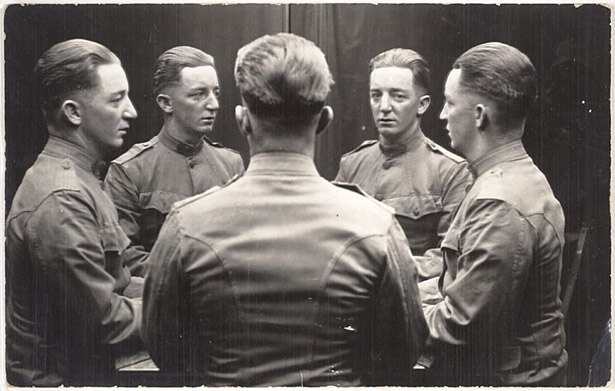Are other communities made up of savages, role models or merely people like us?
(http://www.ville-ge.ch/musinfo/ethg/expo02.php)
The immense variety of the world’s languages, religions and cultures is brought home to us every day, in the streets and in the media. For some people, such diversity is a problem; for others, it is a boon and an advantage.
Drawing on quotations from Claude Lévi-Strauss’s well-known book, Race and History, the exhibition “Nous autres” looks at cultural diversity and racism, key issues in our modern societies. It starts by observing that we are all, deep down, ethnocentric, meaning that we tend to believe that we alone in the world are rational and civilized, that the conduct of foreigners is beyond understanding and disgraceful. It would appear that it is often ignorance, isolation and fear which lead us to think of other community as savages and to believe in myths of all kinds about them. And yet, ethnocentricity and discrimination are not inevitable. Our view of the rest of humanity changes over time; it depends on how well we know and how much contact we have with other peoples and parts of the world.
Ethnology and anthropology have been instrumental in shaping that view and in promoting understanding between peoples by showing that each society or culture has its own values and that, given its special characteristics, a single criterion cannot be applied to judge all of them. At the same time, the “Nous Autres” exhibition is intended to cast a critical eye over this discipline, which sees in other communities a subject for study, sometimes forgetting that it is dealing with human beings who are also entitled to a say on the questions concerning them. We can no longer consider the other community as being primitive or merely a curiosity for observation but must instead treat it as a genuine partner. It is not a question of making it a model or of making it the same as ourselves but rather of acknowledging that it is different and asking it to do the same with regard to ourselves.
Through the way in which the stage has been set, the “Nous Autres” exhibition invites everyone to face up to the complexity of human relations. Passing from one hall to another, the exhibition addresses not only the different representations that we Westerners have of other communities but also the view that they have of us. At the entrance to the museum, the arrangement of mirrors installed in the hall projects the visitor’s reflection to infinity, surrounded by human statuettes and figurines from all over the world, suggesting perhaps that these other communities could be us. From the myth of the Tower of Babel and the confounding of language to recent work in ethnology and anthropology, the exhibition has been organised in the form of a series of questions and historical milestones that highlight our prejudices and stereotypes with regard to others. From topic to topic, from scene to scene, the other community is revealed in different forms – a monster of the Middle Ages, an Amerindian at the time of the Conquistadors, an anthropomorphic monkey, a native of the colonies, a Kwakiutl chief from North America or an inhabitant of Val de Bagnes. The exhibition leads us to the conclusion that, nowadays, the other community no longer lives in a faraway land but is also here among us, represented by colleagues at work, our doctor or the owner of the corner-shop.
Mediation is often a good way of enabling people from here and people from there to speak to each other without misunderstandings. In conclusion, therefore, the floor is now given to the practitioners and the interpreters, to the migrants and the ethnologists who are trying to ensure that we all manage to live together more harmoniously.
Now that UNESCO is celebrating its 60th anniversary and that cultural diversity has been raised to the level of "world heritage of mankind", the exhibition “Nous autres” is the occasion to present the wealth of this diversity by drawing extensively on the collections of the Geneva Ethnography Museum.
Thanks to cooperation with sister institutions of the City of Geneva and other museums in Switzerland and abroad, it has also been able to display a number of old and precious objects and documents rarely if ever exhibited before, while, at the same time, a place of honour has been reserved for the creations of contemporary artists.
The exhibition is presented under the patronage of the Swiss Commission for UNESCO.
” The sense of gratitude and respect which each single member of a given culture can and should feel towards all others can only be based on the conviction that the other cultures differ from his own in countless ways, even if the ultimate essence of these differences eludes him or if, in spite of his best efforts, he can reach no more than an imperfect understanding of them.” Claude Lévi-Strauss, Race and History, 1952

